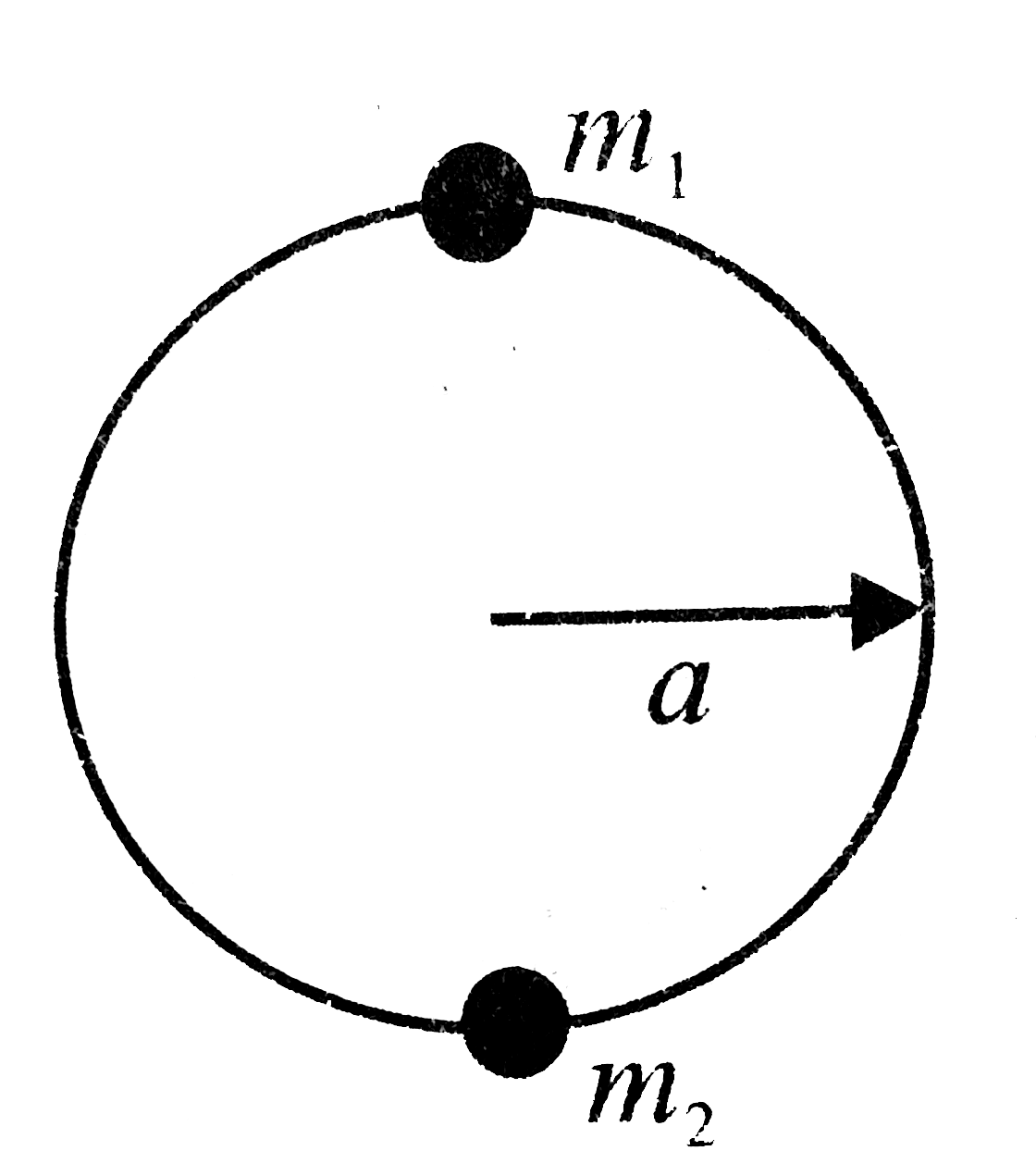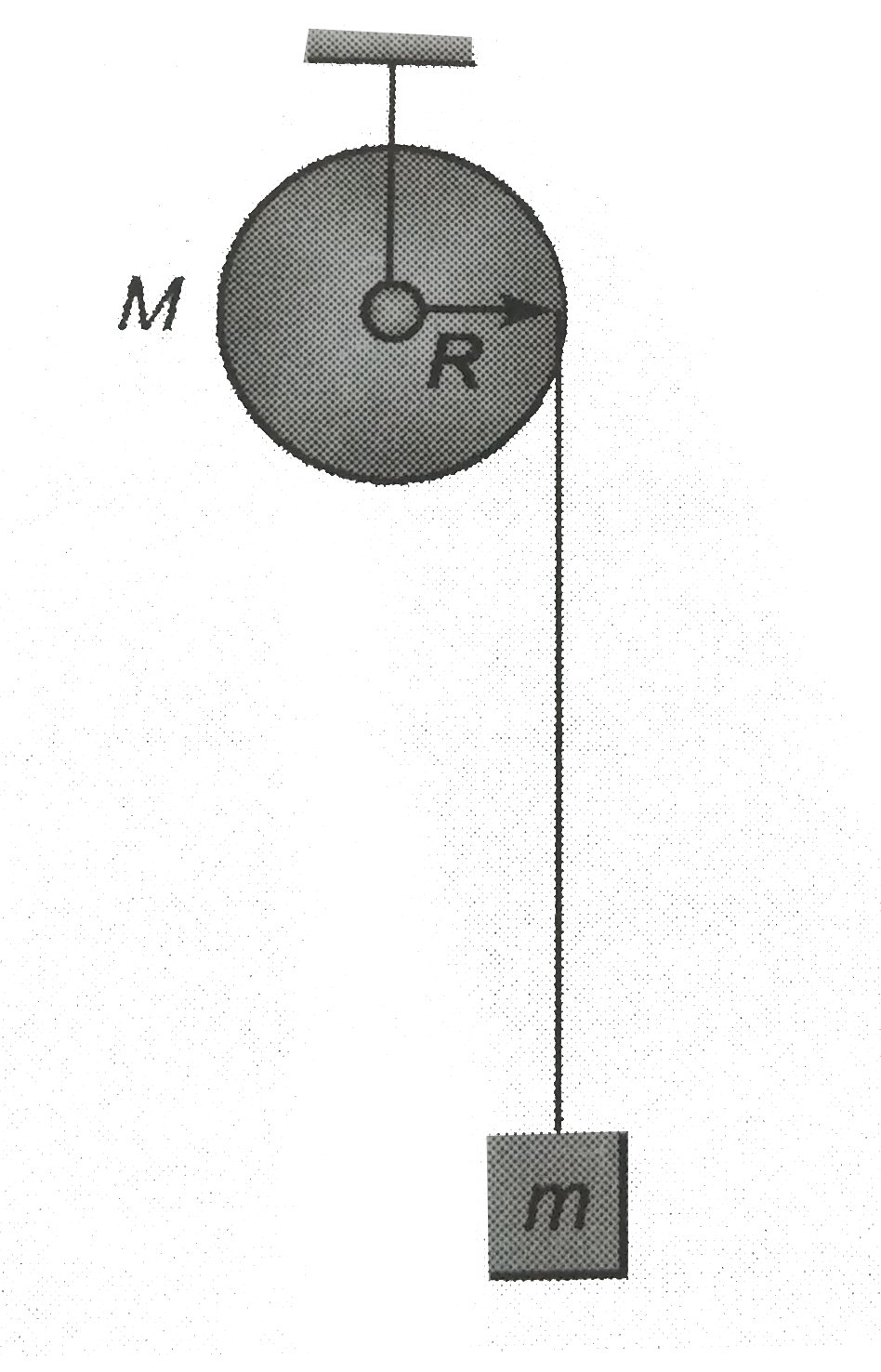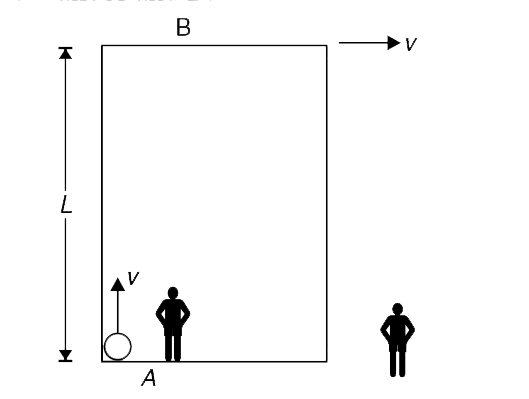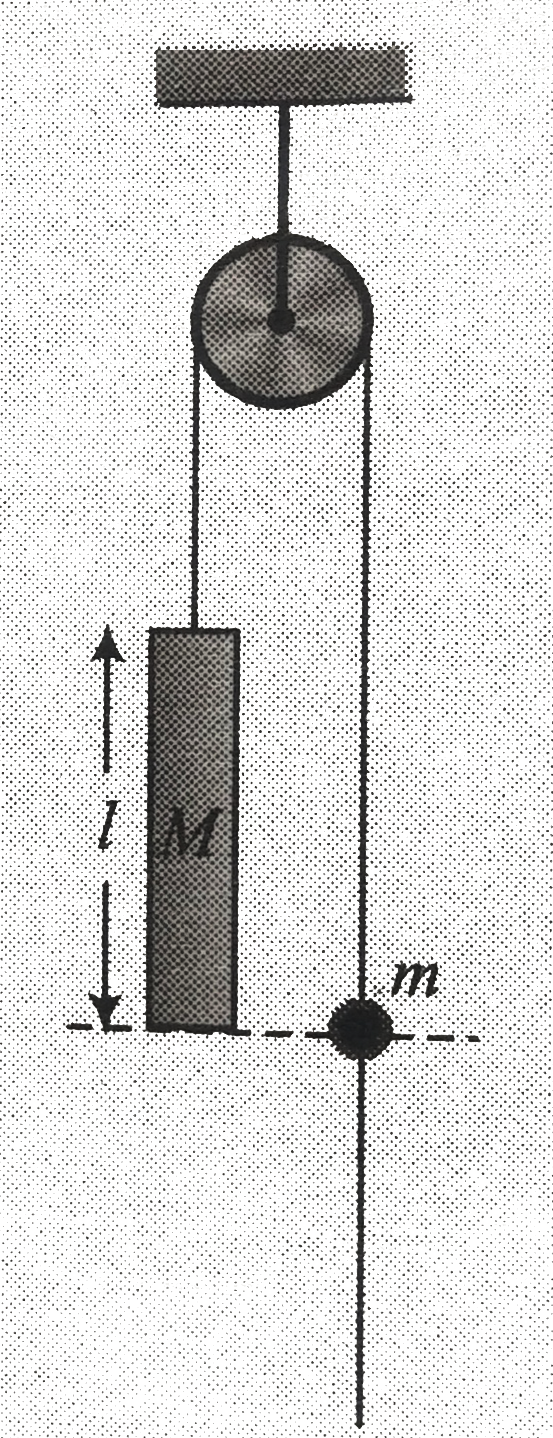A ball is tied by a weightless inextensible thread to a fixed cylinder of radius r. At the initial moment the thread is wound so that the ball touches the cylinder. Then the ball acquires a velocity v in the raidal direction, and the thread starts unwinding (Fig). Determine the length l of the upwound segment of the thread by the instant of time t, neglecting the force of gravity.

Step by step video & image solution for A ball is tied by a weightless inextensible thread to a fixed cylinder of radius r. At the initial moment the thread is wound so that the ball touches the cylinder. Then the ball acquires a velocity v in the raidal direction, and the thread starts unwinding (Fig). Determine the length l of the upwound segment of the thread by the instant of time t, neglecting the force of gravity. by Physics experts to help you in doubts & scoring excellent marks in Class 12 exams.
Updated on:21/07/2023Topper's Solved these Questions
Similar Questions
A block is connected to an identical block through a weightless pulley by a weightless inextensible thread of length 2l (Fig). The left block rests on a table at a distance l from its edge, while the right block is kept at the same level so that the thread is unstretched and does not sag, and then released. What will happen first will the left block reach the edge of the table (and touch the pulley) or the right block hit and table?

View SolutionTwo loads of the same mass are tied to the ends of a weightless inextensible thread passed through a weightless pulley (Fig. ). Initially, the system is at rest,and the loads are at the same level. Then the right load abruptly acquires a horizontal velocity v in the plane of the figure. Which load will be lower in a time?

View Solution
Knowledge Check
Two identical balls are interconnected with a massless and inextensible thread. The system is in gravity free space with the thread just taut. Each ball is imparted a velocity v, one towards the other ball and the other perpendicular to the first, at t=0. Then,
Athe thread will become tart at t=(L/v)Bthe thread will become taut at some time t<(L/v).Cthe thread will always remain taut for t>(L/v).Dthe kinetic energy of the system will always remain mv2.Three identical balls are connected by light inextensible strings with each other as shown and rest over a smooth horizontal table. Length of each string is l.
At moment t=0, ball B is imparted a velocity v0 perpendicular to the strings and then the system is left on its own.

Calculate the velocity of A at the above given instant.Av03B2v03C2v06Dnone of these
Light thread is tightly wound on a uniform solid cylinder of radius R. The cylinder is placed on a smooth horizontal table and the thread is pulled horizontally as shown, by applying a constant force F. How much length of the thread is unwound from the cylinder by the time its kinetic energy becomes equal to K.

View SolutionTwo identical small balls are interconnected with a light and inextensible thread having length L. The system is on a smooth horizontal table with the thread just taut. Each ball is imparted a velocity v, one towards the other ball and the other in a direction that is perpendicular to the velocity given to the first ball.

(a) After how much time the thread will become taut again?
(b) Calculate the kinetic energy of the system after the string gets taut.
View SolutionA light thread with a body of mass m tied to its end is wound on a uniform solid cylinder of mass M and radius R. At a moment t=0 the system is set in motion. Assuming the friction in the axle of the cylinder to be negligible, find the time dependence of
(a) the angular velocity of the cylinder and
(b) the kinetic energy of the whole system ( M=2m).

View SolutionA man standing inside a room of length L rolls a ball along the floor at time t=0. The ball travels at constant speed v relative to the floor, hits the front wall (B) and rebounds back with same speed v. The man catches the ball back at the wall A at time t0. The ball travelled along a straight line relative to the man inside the room. Another observer standing outside the room found that the entire room was travelling horizontally at constant velocity v in a direction parallel to the two walls A and B.

(a) Find the average speed of the ball in the time interval t=0 to t=t0 as observed by the observer outside the room.
(b) If the room has acceleration in the direction of its velocity draw a sketch of the path of the ball as observed by the observer standing outside. Assume that velocity of room was v at the instant the ball was released.
View SolutionA ball of mass m is suspended by a thread of length l. With what minimum velocity has the point of suspension to be shifted in the horizontal direction for the ball to move along the circle about that point? What will be the tension of the thread at the moment it will be passing the horizontal position?
View SolutionIn the arrangement shown in fig., mass of the rod M exceeds the mass m of the ball. The ball has an opening permitting it to slide along the thread with some friction. The mass of the pulley and the friction in its axle are negligible. At the initial moment, the ball was located opposite the lower end of the rod. When set free, both bodies began moving with constant accelerations. Find the friction force between the ball and the thread if t seconds after the beginning of motion, the ball got opposite to the upper end of the rod. The rod length equals l.

View Solution
